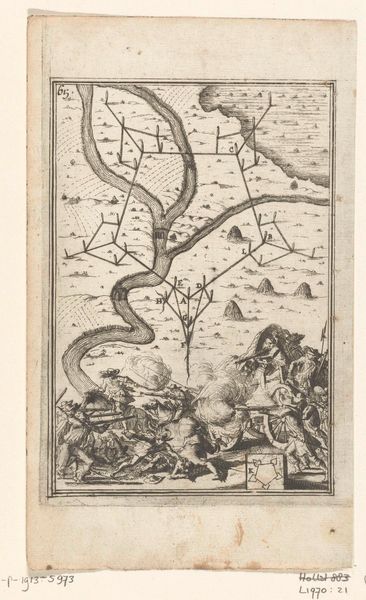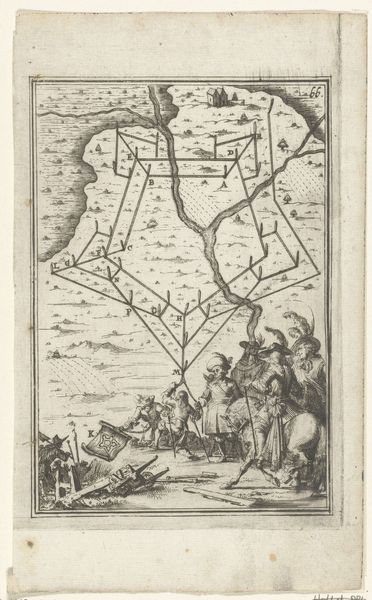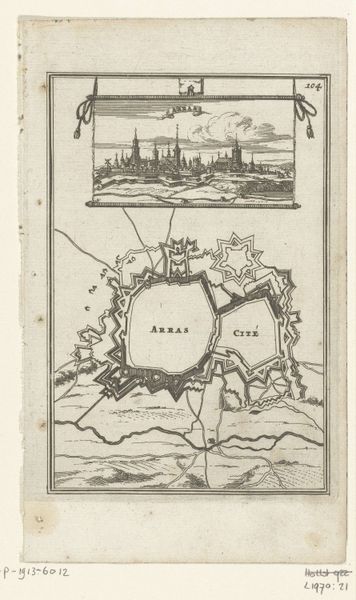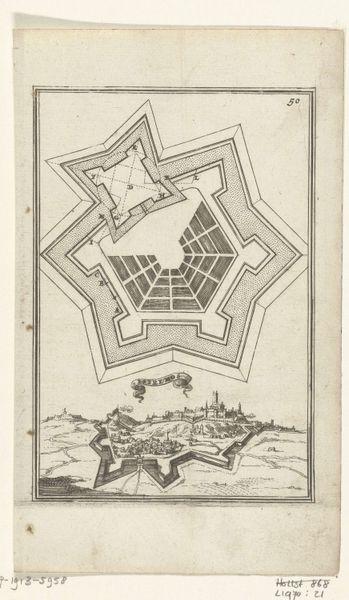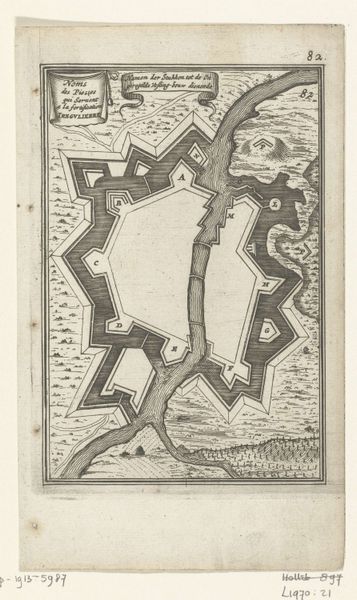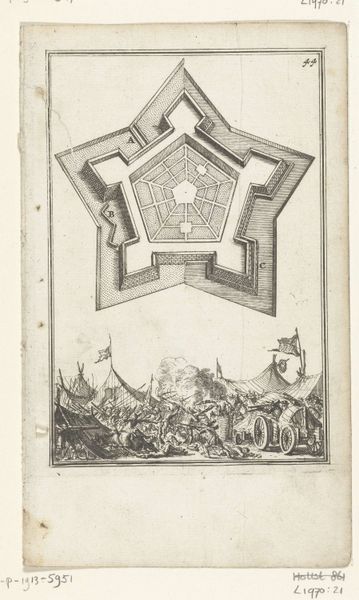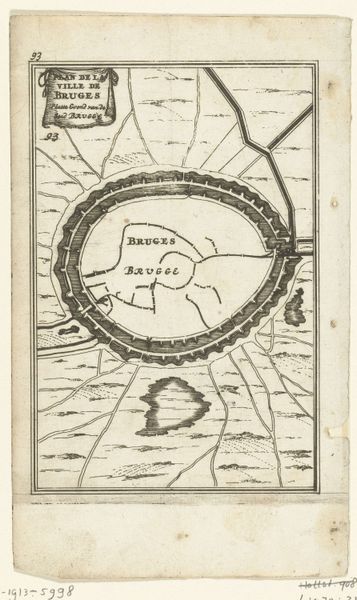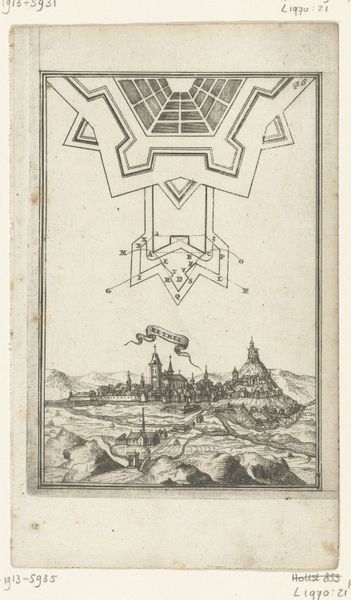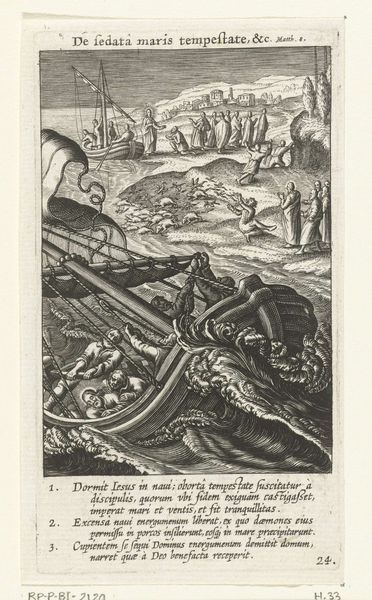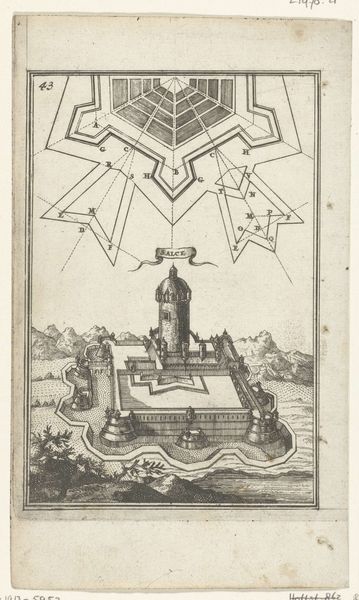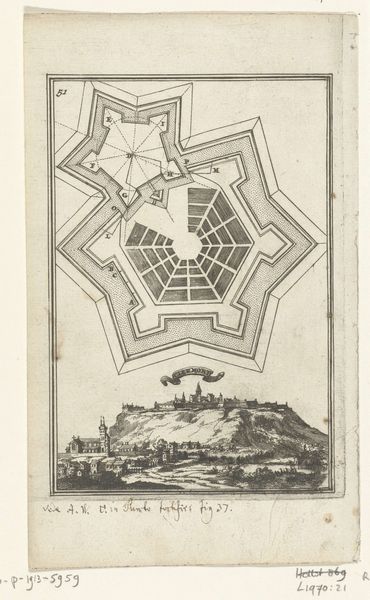
Illustratie voor 'Den Arbeid van Mars' van Allain Manesson Mallet 1672
0:00
0:00
romeyndehooghe
Rijksmuseum
print, engraving
#
baroque
# print
#
pen sketch
#
old engraving style
#
line
#
cityscape
#
engraving
Dimensions: height 185 mm, width 112 mm
Copyright: Rijks Museum: Open Domain
Editor: Here we have "Illustratie voor 'Den Arbeid van Mars' van Allain Manesson Mallet" created in 1672 by Romeyn de Hooghe, it is currently at the Rijksmuseum, and it's an engraving. The lines are incredible, but what do you make of it? Curator: Indeed. The engraving exhibits a striking formal arrangement. Consider the geometrical precision, the interplay between line and negative space. It’s a dialectic—an oscillation between depiction and abstraction. How do these formal qualities contribute to the overall aesthetic impact? Editor: The geometric shape, the walled city of 'Dvnqverqve' against what seems like water...it's like geometry meets nature. Is there a contrast at play? Curator: Precisely! The contrasting textures - the angular city plan against the fluid representation of water - activate a visual tension. We should observe the distribution of tonal values and how they articulate the overall composition. What principles might the artist be attempting to resolve? Editor: Perhaps to present an idealized form of control over nature through a city plan? And the texture… Is that an illusion, or is that simply due to the medium used, engraving? Curator: Ah, the very materiality asserts itself. The physical act of carving those lines dictates, in part, the final form, yet the artistry lies in leveraging these material constraints to produce compelling visual language. The crosshatching creating tonality… Editor: That’s interesting. It's like the medium dictates the message. The city looks solid and yet it is presented through delicate lines. Curator: Yes, consider how the line becomes both structure and decoration here. De Hooghe’s mastery of the line transcends mere representation. It evokes depth, texture and form through its systematic application, no? We come to learn more about formal order from that initial graphic plan. Editor: It is like he elevated city planning into fine art using geometry and lines. Curator: An astute observation. In doing so, he unveils underlying structures, making visible the very mechanisms of visual representation and revealing structure as subject. We’ve observed here how, in this paradigm, the material processes inform content itself.
Comments
No comments
Be the first to comment and join the conversation on the ultimate creative platform.
